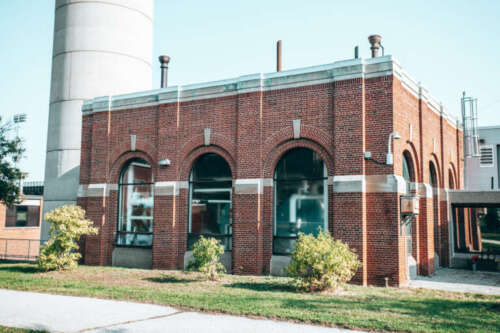
The University of Guelph has received $15 million from the Ontario government to support critical upgrades and repairs to campus facilities. It’s part of a provincial $466-million capital funding investment to help colleges and universities address deferred maintenance.
The announcement was made Dec. 16 by David Piccini, parliamentary assistant to the Minister of Colleges and Universities and MPP for Northumberland—Peterborough South, on behalf of Ross Romano, Minister of Colleges and Universities.
“The knowledge and skills students develop at our world-class post-secondary institutions is critical to the economy, the prosperity of our people and the future of our great province,” Piccini said.
“That is why our ministry has committed to providing annual funding that will help our colleges and universities renew and modernize their facilities.”
The funding comes from the Facilities Renewal Program (FRP). Established in 1986, it provides annual support to colleges and universities to repair, renovate and alter existing facilities.
“The Facilities Renewal Program and the $4.65 million in funding announced today are vital in supporting our ongoing efforts toward providing a modern, accessible and technology-driven campus,” said Dr. Charlotte Yates, U of G president.
“This funding enables us to provide an optimal learning environment for our students, and I want to thank the government for recognizing this important need.”
Nearly 85 per cent of the buildings on the Guelph campus were constructed before 1970. The list of needed updates, repairs and renewal grows each year, Yates said. Current critical projects include removing physical barriers to improve accessibility, modernizing classroom spaces to create better learning environments and undertaking roof repairs.
U of G will receive nearly $4.65 million from the FRP program this year, and the funding will continue for the next three years. U of G’s 2020-21 FRP funding represents an increase of more than $1.7 million — nearly 58 per cent.
U of G will use some of the funding to expand its heat recovery system to improve energy efficiency. The system utilizes what would otherwise be “wasted heat,” which helps reduce greenhouse gas emissions and save money. It involves capturing heat released by the stack at the University’s central utilities and using it to heat large amounts of water. That water is then delivered in underground pipes to campus buildings, providing heating during the winter months.
“Well-maintained facilities and the latest in learning tools and equipment are critical parts of a post-secondary education,” Romano said.
“The need to invest in the maintenance of existing infrastructure is now balanced with the need to invest in new infrastructure, which will be a tremendous boost for local communities looking for much-needed economic stimulus on the road to recovery.”